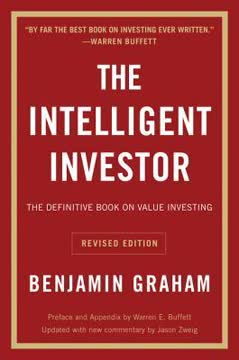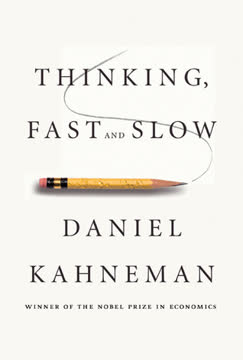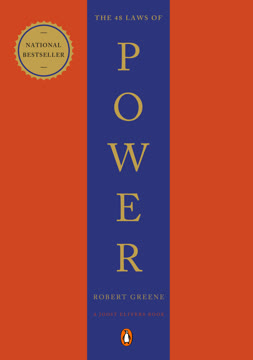つの重要なポイント
1. アクティブリスニング:効果的な交渉の基盤
「効果的な交渉は、人生のあらゆる領域で心理的な優位性を持つための応用的な人間関係の知恵である。相手を評価し、相手が自分をどう評価するかを影響し、その知識を使って自分の望むものを得る方法である。」
交渉の核心は、自分の主張を押し通すことではなく、相手を理解することにある。アクティブリスニングは、ただ聞くだけでなく、話されていることに完全に集中することを要求する。それには以下が含まれる:
- 話し手に全注意を向ける
- ボディランゲージや言葉で聞いていることを示す
- パラフレーズや要約を通じてフィードバックを提供する
アクティブリスニングを通じて、相手の動機、恐れ、欲望についての重要な情報を収集することができる。この情報は交渉におけるレバレッジとなる。さらに、人々が自分の話を聞いてもらっていると感じると、彼らはあなたのアイデアに対してよりオープンになり、協力する意欲が高まる。
2. 戦術的共感:感情を理解し影響を与える
「共感は古典的な『ソフト』コミュニケーションスキルだが、物理的な基盤を持っている。」
戦術的共感は、感情を理解するだけでなく、その理解を示して交渉に影響を与えることを意味する。それには以下が含まれる:
- 相手の視点を認識する
- その認識を声に出して伝える
- その理解を使って会話を導く
戦術的共感を用いることで:
- 信頼とラポールを築く
- ネガティブな感情を減少させる
- 協力的な雰囲気を作り出す
- 好ましい結果の可能性を高める
覚えておいてほしいのは、共感は相手に同意することや自分の立場を妥協することを意味しない。両者が理解され、価値を感じる環境を作り出すことが重要である。
3. 調整された質問:対立なしに会話を導く
「質問を調整して、相手があなたの問題を解決する方向に向かわせる。これにより、相手は解決策を考えるためにエネルギーを費やすようになる。」
調整された質問は、相手があなたの問題を解決するように導くために慎重に作られたオープンエンドの質問である。これらの質問は通常「どうやって」や「何が」から始まり、以下を目的とする:
- 情報を収集する
- 時間を稼ぐ
- 実行に焦点を移す
- 対立なしに「ノー」と言う
調整された質問の例:
- 「どうやってそれをすればいいのですか?」
- 「ここでの目的は何ですか?」
- 「これがあなたにはどう見えますか?」
これらの質問は、相手が問題解決に取り組むよう促し、操作されたり圧力を感じることなく、望む結果に導くことができる。
4. 「ノー」の力:拒絶を利用してより良い結果を得る
「ノーは交渉の始まりであり、終わりではない。」
一般的な信念に反して、「ノー」は交渉において「イエス」よりも価値があることがある。誰かが「ノー」と言うと:
- 彼らは安全でコントロールされていると感じる
- 次にあなたが言うことに対してよりオープンになる
- それはしばしば本当の交渉の始まりである
「ノー」を活用するための戦略:
- 「ノー」を答えとして招く質問をする
- 「ノー」を使って相手が本当に望んでいることを明確にする
- 「ノー」を機会としてアプローチを洗練させる
覚えておいてほしいのは、「ノー」の反応はしばしば本当の利害関係を明らかにし、より本物で生産的な交渉につながることがある。
5. ラベリング:感情を言葉にして和らげ、方向転換する
「ラベリングは、誰かの感情を認めることでその感情を検証する方法である。」
ラベリングは、相手の感情を言葉で認める実践である。それは強力なツールであり、以下の理由から有効である:
- 理解を示す
- ネガティブな感情を和らげる
- 状況を再構築することができる
効果的にラベリングする方法:
- 「~のようですね」や「~のように聞こえます」といったフレーズを使う
- 対立的になりうる「私」ステートメントを避ける
- ポジティブな感情とネガティブな感情の両方をラベル付けする
感情を正確にラベリングすることで、相手とのパートナーシップの感覚を作り出し、解決に向けて協力する意欲を高めることができる。
6. ミラーリング:微妙な模倣を通じてラポールを築く
「ミラーリング、またはイソプラクシズムは、本質的に模倣である。それは、人間(および他の動物)が互いに安心感を与えるために行う神経行動である。」
ミラーリングは、相手が言った最後の数語を繰り返すシンプルだが強力なテクニックである。それは以下の理由で効果的である:
- 絆とラポールを作り出す
- 相手が詳しく説明することを促す
- 考える時間を稼ぐ
ミラーリングの使い方:
- 誰かが言った最後の1~3語(または重要な言葉)を繰り返す
- 疑問のトーンを使う
- ミラーリングの後に沈黙して、詳しく説明するよう促す
ミラーリングは、交渉の初期段階で情報を収集し、信頼を築くのに特に有用である。
7. 会話のコントロール:選択の錯覚を作り出す
「交渉で優位に立つ秘訣は、相手にコントロールの錯覚を与えることである。」
コントロールの錯覚を作り出すことは、相手が会話をリードしていると感じさせながら、実際には自分が導いていることを意味する。テクニックには以下が含まれる:
- 調整された質問を使って会話を導く
- すべてが望む結果に導く制限された選択肢を与える
- 相手にアイデアや懸念を声に出させる
このアプローチの利点:
- 提案に対する抵抗を減らす
- 相手が結果に対してより投資するようになる
- より創造的な問題解決を促す
覚えておいてほしいのは、人々は自分で考えた解決策を受け入れ、実行する可能性が高いということである。
8. 交渉テクニック:アンカリングとアッカーマン交渉
「最終金額を計算する際には、$37,893のような正確な非丸め数字を使用する。これにより、数字に信憑性と重みが加わる。」
効果的な交渉は、自分に有利に交渉を進めるための戦略的なテクニックを含む。二つの主要な方法は:
- アンカリング:相手の期待を影響するために極端な最初のオファーを設定する
- アッカーマン交渉:カウンターオファーを行うための体系的なアプローチ
アッカーマンモデル:
- 目標価格(ゴール)を設定する
- 最初のオファーを目標価格の65%に設定する
- 減少する増分で3回の引き上げを計算する(85%、95%、100%)
- 多くの共感と異なる「ノー」の言い方を使って、相手がカウンターを出すまでオファーを引き上げない
- 正確な非丸め数字を使用する
- 最終的な数字に非金銭的な項目を追加して、限界に達していることを示す
これらのテクニックは、交渉プロセスをコントロールし、より良い結果を達成するのに役立つ。
9. ブラックスワンの発見:交渉を変える隠れた情報
「ブラックスワンはレバレッジの乗数である。レバレッジの三つのタイプを覚えておくこと:ポジティブ(相手が欲しいものを与える能力)、ネガティブ(相手を傷つける能力)、ノーマティブ(相手の規範を使って説得する)。」
ブラックスワンは、発見されれば交渉の流れを劇的に変える情報のことである。それを見つけるためには:
- 不一致や異常な発言に注意深く耳を傾ける
- 公式な交渉の前後の無防備な瞬間を観察する
- 可能な限り対面でのやり取りを求める
ブラックスワンを発見するための戦略:
- 探索的でオープンエンドの質問をする
- 非言語的な手がかりに注意を払う
- 第三者から情報を求める
- 理解できないことを探す
覚えておいてほしいのは、ブラックスワンは重要なレバレッジを提供する可能性があるため、交渉プロセス全体を通じて常にそれを探すことが重要である。
10. 違いを活用する:交渉者のタイプを理解する
「ブラックスワンのルールは、自分がしてほしいように他人に接するのではなく、彼らがしてほしいように接することである。」
交渉者のタイプを理解することで、最大限の効果を発揮するためにアプローチを調整することができる。主な三つのタイプは:
- アコモデーター:関係重視、ラポールの構築を優先する
- アサーティブ:時間重視、迅速に物事を進めたい
- アナリスト:詳細重視、情報を処理する時間が必要
各タイプへのアプローチ方法:
- アコモデーター:ラポールを築くが、過度なおしゃべりは避ける
- アサーティブ:直接的に、迅速に要点に到達する
- アナリスト:詳細な情報を提供し、考える時間を与える
これらの異なるスタイルを認識し適応することで、より効果的にコミュニケーションを取り、交渉でより良い結果を得ることができる。
最終更新日:
FAQ
What's Never Split the Difference about?
- Negotiation Techniques: The book focuses on strategies from Chris Voss's experience as an FBI hostage negotiator, emphasizing psychological over traditional methods.
- Real-World Applications: Techniques are illustrated for everyday use, from business deals to personal relationships, making it relevant for a wide audience.
- Human Psychology: It delves into understanding emotions and behaviors, highlighting their influence on negotiation outcomes.
Why should I read Never Split the Difference?
- Unique Perspective: Offers insights from a former FBI negotiator, with real-life stories that make the content engaging and relatable.
- Practical Strategies: Provides actionable techniques for immediate application in various negotiation scenarios, enhancing effectiveness.
- Emphasis on Empathy: Teaches the importance of empathy in negotiations, leading to better outcomes and stronger relationships.
What are the key takeaways of Never Split the Difference?
- Tactical Empathy: Involves understanding and acknowledging emotions to build rapport and influence decisions.
- The Power of "No": "No" is a starting point for negotiation, allowing for clarification and productive discussions.
- Avoid Compromise: Encourages seeking creative solutions rather than splitting the difference, which often leads to suboptimal outcomes.
What is Tactical Empathy in Never Split the Difference?
- Understanding Emotions: Recognize and articulate the feelings of your counterpart during negotiations.
- Building Trust: Demonstrates understanding of their perspective, creating a safe environment for open communication.
- Labeling Emotions: Use labeling techniques to validate feelings, diffusing negative emotions and fostering collaboration.
How does Chris Voss define "No" in Never Split the Difference?
- Empowerment Through "No": Provides a sense of safety and control, allowing expression of boundaries and concerns.
- Starting Point for Negotiation: Seen as the beginning of a negotiation, opening the door for further discussion.
- Encouraging Honest Dialogue: Inviting "No" creates a more honest and open dialogue, leading to better understanding and solutions.
What is the "Black Swan" concept in Never Split the Difference?
- Definition of Black Swans: Unexpected information that can dramatically alter negotiation dynamics.
- Importance in Negotiation: Identifying Black Swans shifts dynamics in favor, with every negotiation containing at least three.
- Examples of Black Swans: Real-life examples show how failure to recognize them can lead to negative outcomes.
How can I trigger a "That's Right" moment in negotiations?
- Summarize Effectively: Reflect back what your counterpart has said, including emotions and concerns.
- Use Labels: Validate their emotions to help them feel understood and more open to collaboration.
- Encourage Dialogue: Create a safe environment for expression, leading to breakthroughs in understanding and agreement.
What is the Behavioral Change Stairway Model (BCSM) in Never Split the Difference?
- Five Stages of Negotiation: Consists of active listening, empathy, rapport, influence, and behavioral change.
- Focus on Emotional Connection: Emphasizes establishing a connection to influence behavior positively.
- Real-World Application: Illustrates how successful negotiations lead to meaningful changes in behavior and outcomes.
What are some techniques for building rapport in negotiations according to Chris Voss?
- Mirroring: Mimic body language and speech patterns to create a sense of connection and trust.
- Labeling Emotions: Demonstrate understanding and empathy by labeling the emotions of the other party.
- Active Listening: Ask open-ended questions and summarize points to foster a collaborative atmosphere.
What is the Ackerman model mentioned in Never Split the Difference?
- Four-Step Process: Involves setting a target price, making an initial offer at 65%, and increasing in decreasing increments.
- Psychological Anchoring: Start with a low offer to set an extreme anchor, influencing expectations.
- Non-Round Numbers: Use precise numbers in offers to lend credibility and weight to the proposal.
How can I effectively say "No" in negotiations according to Chris Voss?
- Calibrated Questions: Use questions like "How am I supposed to do that?" to decline while keeping the conversation open.
- Empathy and Understanding: Express empathy and understanding of the other party's position when saying "No."
- Multiple "No" Steps: Use a series of "No" responses before a final rejection to communicate boundaries without shutting down the conversation.
What role does emotional intelligence play in negotiation in Never Split the Difference?
- Understanding Emotions: Recognize and understand both your own emotions and those of your counterpart.
- Building Trust: Demonstrate empathy and validate feelings to build trust and rapport.
- Managing Reactions: Stay calm and composed to maintain control and avoid escalating conflicts.
レビュー
本書『Never Split the Difference』は、実践的な交渉技術と現実の例が高く評価されている。読者は著者のFBI人質交渉の経験を魅力的だと感じている。一部の批評家は、いくつかの戦術が操作的であったり、文化的に特有であると指摘している。読者は共感、積極的な傾聴、他者の視点を理解することに焦点を当てている点を評価している。しかし、内容が圧倒的であったり、適用が難しいと感じる人もいる。全体として、ほとんどの読者は、プロフェッショナルおよび個人的な文脈で交渉スキルを向上させるための貴重なリソースと考えている。
Similar Books















